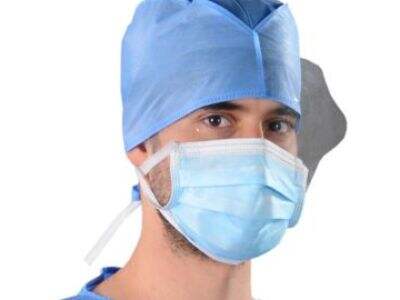If you have an illness or an injury, a doctor may recommend that you need surgery in order to get better. So surgery is a method doctors use to repair things inside your body. One thing that most people don't think about is the special clothes that doctors and nurses wear during surgery. These are surgical gowns, which are really important because they help keep infections away.
Doctors and nurses must do their best to sterilize everything during surgery. This means that they must ensure that there are no germs on their clothes or skin. Germs are small living things that can make people sick. Surgical gowns are made of special materials that help repel such germs. Those gowns, worn by the doctors and the nurses, go from the neck to the ankle. They also include arms that are long at the sleeves. That way, any germs on their skin or clothes are completely covered up and don’t get into the patient’s body during the surgery.
Properly Fitted Surgical Gowns Are Critical
It isn't just the type of material that the surgical gown is constructed from that matters – the fit of the gown itself is extremely important too. The skin or clothes that is showing may be due to the dress not fitting properly. This is an issue as germs can come in through those and infect you. Because an infection can leave someone feeling even less well right after surgery, they need to be prevented.
Therefore, the requirement of an appropriately fitted surgical gown to the person. The gown should not only fit the doctor or nurse putting it on, but also cover all that needs to be covered. The neck and wrist of the gown must be tightly fitted so there is no gap for germs to slink under, and doctors and nurses should remove any jewellery or watch before donning their gown. That's because those items can leave tiny spaces where the germs could potentially access.
Surgical Gowns: The Infection Control Controversy
Surgical gowns are only one part of a complete plan to prevent infections from occurring during surgery. Surgeons and nurses must scrub their hands very thoroughly before a procedure in order to be gowned and gloved aseptically. They will wear they will also don clean gloves to protect themselves and the patient. They might sometimes even put on face masks or eye visors to prevent any germs entering their mouths or eyes while working.
The surgical team must exercise extreme caution during the surgery. They have to very carefully not accidentally touch anything that might be germy or hexed. To assist with this, they may use specific tools that help them avoid contact with surfaces such as the patient's skin or even their own clothing. That works to keep everything as clean as possible in the course of the surgery.
Once the operation is over, the surgical team needs to take a lot of caution when touching contaminated surfaces which are likely to contain germs. They have to safely get rid of any thing one would have possibly contaminated-that is, dispose it in a safe way." Then they have to really scrub their hands and arms thoroughly so that one does not walk out of the operating room carrying germs to infect others there. It's a good move toward protecting others patients as well as employees who come and go there.
Role of Surgical Gown
The essential aspect of every surgical procedure is the surgical gowns. It protects the patient and the surgical team involved. They protect the surgical team's skin and clothing so that the germs will not be able to reach the body of the patient, causing infection. In reality, this is simply a matter of the patient recovering and getting better after the surgery.
They are also designed to be easy to put on and take off. This can be particularly helpful because it reduces the likelihood of transferring pathogens. Other times surgical gowns are made from material that can be discarded after each use, very convenient. Other times, they may be made from materials that can be washed and sterilized, so that they can be used again safely.
Infection Control: How Surgical Gowns Protect Against Contamination
Every time someone is cut, the possibility of infection arises; this is reduced a lot with the help of surgical gowns. Surgical gowns are the protective wear that lies between the team of surgeons and the patient, thus protecting germs from penetrating the body to cause infections, and that's really vital for the patient.
But surgical gowns aren't the whole infection prevention plan picture. Doctors and nurses also need to take these other critical extra steps, including appropriately washing their hands and safely removing any contaminated items. Working collaboratively and through the infection prevention process, the operating team, plus the patients whom they are surgically treating can be kept microbe-free.
Yes, at Topmed, you hear a lot about preventing infections in the surgical ward. We manufacture our surgical gowns using superior quality fabric and fit as per regulation to offer maximum coverage. We are always taking great care of our products to bring the best quality to our customers. Our mission is to help keep everyone safe and healthy during surgical procedures.
 EN
EN
 AR
AR
 BG
BG
 HR
HR
 CS
CS
 DA
DA
 NL
NL
 FI
FI
 FR
FR
 DE
DE
 EL
EL
 HI
HI
 IT
IT
 JA
JA
 KO
KO
 NO
NO
 PL
PL
 PT
PT
 RO
RO
 RU
RU
 ES
ES
 SV
SV
 TL
TL
 IW
IW
 ID
ID
 LV
LV
 LT
LT
 SR
SR
 SK
SK
 VI
VI
 HU
HU
 TH
TH
 TR
TR
 FA
FA
 GA
GA
 CY
CY
 IS
IS
 LA
LA














